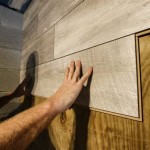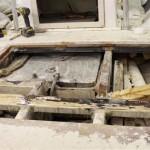Laying Wood Flooring Over Underfloor Heating
The integration of wood flooring with underfloor heating (UFH) systems has become a sought-after method for achieving both aesthetic appeal and energy-efficient heating within residential and commercial spaces. However, successful implementation requires meticulous planning, careful material selection, and adherence to specific installation guidelines. The compatibility of wood flooring with UFH hinges on several factors, including the type of wood, the UFH system employed, and the subfloor preparation.
This document aims to provide a comprehensive overview of the key considerations and best practices involved in laying wood flooring over underfloor heating, covering aspects from suitability assessment to installation techniques. Understanding these principles is crucial for ensuring optimal performance, longevity, and comfort.
Assessing Wood Flooring Suitability for Underfloor Heating
Not all wood flooring is suitable for use with underfloor heating. The dimensional stability of the wood – its ability to resist expansion and contraction in response to changes in temperature and humidity – is paramount. Hardwood species that exhibit greater stability are generally preferred. Engineered wood flooring, constructed from multiple layers of wood bonded together, typically offers superior dimensional stability compared to solid wood flooring.
Solid wood flooring tends to expand and contract more significantly with temperature fluctuations, increasing the risk of warping, cupping, and gapping when installed over UFH. Certain solid wood species, such as oak and walnut, are known for their relatively good stability and may be suitable, but should be carefully considered in conjunction with expert advice. Wider planks of solid wood flooring are generally more susceptible to movement and should be avoided in UFH applications.
Engineered wood flooring, on the other hand, features a stable core, often made of plywood or high-density fiberboard (HDF), which significantly minimizes expansion and contraction. The top layer, or veneer, is made of the desired wood species. The cross-laminated construction of engineered wood enhances its resistance to moisture and temperature changes, making it a more reliable choice for installation over UFH. The thickness of the veneer layer can also impact heat transfer; thinner veneers may allow for slightly faster heat-up times.
When selecting wood flooring, it is imperative to consult with both the flooring manufacturer and the UFH system supplier to confirm compatibility. Manufacturers typically provide specific guidelines regarding suitable wood species, plank dimensions, and installation methods for use with their UFH systems. These guidelines often include maximum surface temperature recommendations and humidity control requirements.
The thermal resistance of the wood flooring material also plays a crucial role in the efficiency of the UFH system. Wood acts as an insulator, so excessively thick flooring can impede heat transfer and reduce the system's effectiveness. The thermal resistance, denoted as R-value, is a measure of a material's ability to resist heat flow. Lower R-values indicate better heat conductivity. It is advisable to choose wood flooring with a low R-value to maximize heat output and minimize energy consumption. The combined thermal resistance of the flooring, underlayment (if used), and any other intervening layers should not exceed the UFH system manufacturer's recommended limit.
Relative humidity control is also paramount. Wood responds to changes in humidity by absorbing or releasing moisture, leading to expansion or contraction. Maintaining a consistent relative humidity level, typically between 30% and 60%, is essential for minimizing dimensional changes and preventing damage to the wood flooring. Humidifiers and dehumidifiers may be necessary to regulate humidity levels, particularly during heating season.
Preparing the Subfloor for Underfloor Heating
Proper subfloor preparation is crucial for the successful installation of wood flooring over UFH. The subfloor must be level, clean, dry, and structurally sound. Any imperfections, such as cracks, unevenness, or loose debris, must be addressed before proceeding with the installation.
A self-leveling compound may be necessary to create a perfectly level surface. This compound is typically poured over the subfloor and allowed to spread and harden, creating a smooth and even base for the UFH system and wood flooring. The self-leveling compound should be compatible with the UFH system and the adhesive used for installing the wood flooring.
The moisture content of the subfloor must be carefully checked before installation. Excessive moisture can damage the wood flooring and lead to mold growth. A moisture meter should be used to measure the moisture content of the subfloor, and it should be within the manufacturer's recommended range for the wood flooring being installed. If the moisture content is too high, the subfloor must be allowed to dry thoroughly before proceeding.
The type of subfloor also influences the installation process. Concrete subfloors are commonly used with UFH systems. They provide a stable and heat-conductive base for the UFH pipes or cables. Wooden subfloors, such as plywood or oriented strand board (OSB), can also be used, but they require careful consideration of their structural integrity and moisture resistance. In some cases, a layer of cement backer board may be installed over the wooden subfloor to provide a more stable and heat-conductive surface.
Insulation beneath the UFH system is crucial for directing heat upwards and preventing heat loss downwards. This insulation layer helps to improve the energy efficiency of the system and reduces heating costs. The type and thickness of insulation will depend on the specific UFH system and the insulation requirements of the building. Common insulation materials include expanded polystyrene (EPS), extruded polystyrene (XPS), and mineral wool.
Before installing the UFH system, it is important to ensure that the subfloor is thoroughly cleaned and free of any dust, debris, or contaminants. A vacuum cleaner with a HEPA filter is recommended for removing fine particles. Any oil, grease, or other residues should be cleaned with a suitable solvent.
Installation Techniques and Best Practices
Several installation methods can be used for laying wood flooring over UFH, including gluing, floating, and nailing. The most appropriate method depends on the type of wood flooring, the UFH system, and the subfloor. Gluing is generally considered the preferred method for engineered wood flooring over UFH, as it provides a secure bond between the flooring and the subfloor, facilitating efficient heat transfer.
When gluing wood flooring, it is essential to use a flexible adhesive that is specifically designed for use with UFH systems. These adhesives are formulated to accommodate the expansion and contraction of the wood flooring without cracking or delaminating. The adhesive should be applied evenly and according to the manufacturer's instructions. A notched trowel is typically used to apply the adhesive in a consistent thickness.
Floating installation involves laying the wood flooring over an underlayment without directly adhering it to the subfloor. The planks are typically joined together using a click-lock system. Floating installations can be quicker and easier than gluing, but they may not provide as efficient heat transfer. The underlayment should be thin and have a low thermal resistance to minimize heat loss. It is crucial to select an underlayment that is specifically designed for use with UFH systems. Underlayments that are too thick or that have high thermal resistance can significantly reduce the efficiency of the UFH system.
Nailing or stapling wood flooring is generally not recommended for use with UFH systems, as the fasteners can damage the UFH pipes or cables. However, in certain situations, it may be possible to nail or staple the wood flooring to battens or sleepers installed over the UFH system. This method requires careful planning and execution to avoid damaging the UFH components. The battens or sleepers should be spaced appropriately to provide adequate support for the wood flooring.
Acclimatizing the wood flooring to the installation environment is crucial for minimizing expansion and contraction after installation. The wood flooring should be stored in the room where it will be installed for several days before installation, allowing it to adjust to the temperature and humidity conditions. The UFH system should be turned on at a low temperature during the acclimatization period to help stabilize the moisture content of the wood.
Expansion gaps should be left around the perimeter of the room and around any fixed objects, such as pipes or columns. These gaps allow the wood flooring to expand and contract without putting pressure on the surrounding structures. The width of the expansion gaps should be determined based on the type of wood flooring, the size of the room, and the expected temperature and humidity variations. The expansion gaps can be covered with baseboards or trim after installation.
After installation, the UFH system should be gradually brought up to the desired temperature over several days. This gradual increase in temperature allows the wood flooring to adjust slowly and minimizes the risk of warping or cracking. The maximum surface temperature of the wood flooring should be carefully monitored and should not exceed the manufacturer's recommended limit. This temperature is generally around 27°C (81°F). Regular maintenance and cleaning are essential for preserving the appearance and longevity of the wood flooring. Use only cleaning products that are specifically designed for wood flooring, and avoid excessive moisture.
Installing wood flooring over underfloor heating requires careful planning and expertise. Consulting with qualified professionals, including flooring installers, UFH system suppliers, and HVAC specialists, is highly recommended to ensure a successful and long-lasting installation. Adhering to the manufacturer's instructions and best practices is essential for achieving optimal performance, energy efficiency, and comfort.

Installing Wood Flooring Over Underfloor Heating Esb

Installing Wood Flooring Over Underfloor Heating Esb

Installing Engineered Wood Flooring On Underfloor Heating 5 Simple Steps Flooringhub Co Home Hub Elevate Your Space With Expert Tips Exclusive Offers

Install Underfloor Heating Under Wood Floor Discount Flooring Depotdiscount Depot Blog

Guide To Heating Under Hardwood Flooring Warmup Usa

Installing Engineered Wood Floors On Underfloor Heating Kährs

Underfloor Heating For Wooden Floors Warmup

Laying Engineered Wood Flooring Over Underfloor Heating

Installing Wood Flooring Over Underfloor Heating Ted Todd Fine Floors

Installing Engineered Wood Floors On Underfloor Heating Kährs
Related Posts








